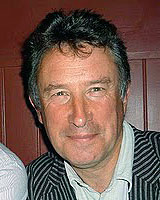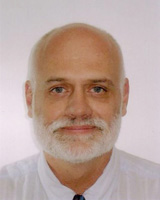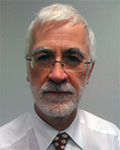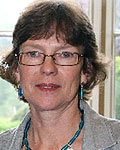Introduction
Rural medical education is now entrenched in nations where a combination of poor rural health status, rural health workforce shortage, education research evidence and effective rural health politics has effected change. Arguably the most substantial change has taken place in Australia, where medical schools must meet targets for admitting rural background students, promoting rural careers to students, teaching and assessing rural health, and establishing academic infrastructure in rural communities1. Several of the new medical school developments are based in rural and regional communities, such as James Cook University2. Although some outcomes of these measures may not be evident for some time, there is early evidence that targets are being either met or exceeded and that acceptance may be increasing of medical careers in rural and regional communities3-5. While arguably not embraced either nationally or as strongly as in Australia, similar initiatives are in place in New Zealand and North America6,7.
The situation in the United Kingdom (UK) and Europe is however different, with no nationally or regionally agreed approaches to rural medical education. In the UK, rural health is not widely regarded as a significant issue, and there appears to be no consensus on rural health status or workforce needs8-10. There is no strong, unified advocacy for rural health education, and consequently no required targets for admission of rural background students or rural learning experiences. With notable exceptions in northern Scotland and mid-Wales11, the current position of rural health education is more like that in Australia and North America before the expansion of rural medical education.
This article reports findings from a scoping exercise focused on one new undergraduate medical school in rural England. The curriculum under development will include options for up to 15 weeks of the final year based in rural primary care, pursuing a wide range of learning opportunities relevant to the whole curriculum through longitudinal contact with patients and the healthcare team, modelled on Australian experience12. The inclusion of rural placements addresses two aims. The first is to increase primary care teaching capacity through rural practice recruitment, and the second is to provide students with opportunities to learn about rural health needs and rural professional life. As part of the design process for the new curriculum, we felt it important to obtain the views of students about their understanding of rural health issues and the relevance of rural clinical placements to their learning. Advice from the School of Medicine Ethics Committee was that as this was a curriculum evaluation project, formal ethics approval was not required.
Method
Setting
Keele University has a new medical school that commenced in 2001 as a clinical school of Manchester University Medical School, implementing the Manchester curriculum. The school became independent in 2003. It is introducing a new curriculum that is designed to take advantage of the learning resources in the health economies of Staffordshire and Shropshire, combining one regional city, several county towns and a large surrounding rural region, all regarded as being distant from major urban centres.
Participants
Medical students in Years 3 and 1 were informed about the project by academic staff with a brief presentation prior to a lecture, followed by class emails that invited them to attend focus group meetings. These two cohorts were chosen because none of the students had as yet undertaken a rural clinical placement and were the first cohorts that would have an opportunity to experience the rural placements developed for the new curriculum. The Year 3 cohort is studying a metropolitan-derived curriculum but will be offered shorter pilots of the proposed rural placements in Year 5; while the Year 1 cohort will be the first to have the option of substantial rural clinical placements in Year 5 of the new curriculum. A total of 7 of 116 (5 female, 2 male) Year 3 and 17 of 137 (11 female, 6 male) Year 1 students volunteered. The gender split is reasonably representative of the student cohorts, which are approximately 65% female. In both focus groups three students identified as having a rural background, but it is not known how representative this is of the student cohort as whole, because rural background data are not routinely recorded and there is no easy way of mapping student home and education addresses to an agreed rural classification
Focus group method
The focus group meetings were of approximately 45 min duration and were conducted within the medical school by two of the authors (JD and JRS), both of whom were independent of the university and had no other contact or relationship with medical students. Key issues explored included student perceptions of the meaning of 'rural' and the learning opportunities offered by rural clinical placements, following an agreed set of questions based on the literature and perception of local teaching faculty (Fig1). Authors JD and JRS jointly thematically analysed the audio-recorded and transcribed conversations, reaching agreement on and validating the emerging themes.
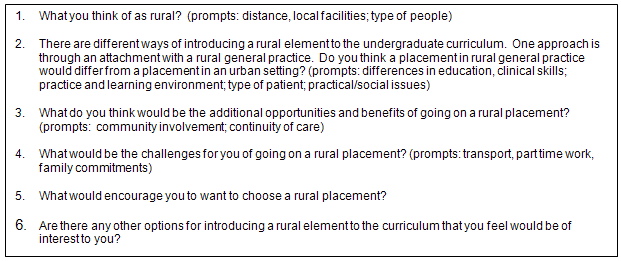
Figure 1: Questions used during focus groups to guide discussion.
Results
Themes that emerged from the analysis were: what is rural?; how different is rural from urban?; differences in rural and urban learning, logistic issues, and choosing a rural placement. These are presented separately.
What is rural?
In both groups, the issues of landscape, settlement type and use of land were raised as an important feature in defining rurality:
...typical English view of a rural area - farmland. (Yr 1)
...it depends on type of rural, village could be a big rural community, but if you go up into the hills little farms on their own. (Yr 1)
...isolated... (yr 1)
However the strongest theme was the community aspect of rurality:
...more of a close knit community... (Yr 1)
...more community support for people in a rural area... (Yr 3)
...everyone knows everyone... (Yr 3)
...tend to know your neighbours more. (Yr 3)
There was some discussion on the degree of rurality, suggesting that this will mean different things to different people, depending on their background:
[This medical school] is in the middle of no-where! (Yr 1)
It's relative to what you know, when I came here I thought this was the middle of nowhere! (Yr 3)
Differences between urban and rural
Students identified a number of differences between urban and rural areas and, in particular, focused on differences between urban and rural practice, with rural practice regarded as being quieter but having a broader range of responsibilities:
...how busy practices will be - perception that they're not as busy as in urban areas. (Yr 1)
...expect GP to do more, eg minor surgery... (Yr 3)
Rural practice would be much smaller, fewer facilities, would expect GP to do more, eg minor surgery etc and a really good rapport with patients. (Yr 3)
In line with the perceived importance of community in rural areas, students also felt that:
...rural communities would be more welcoming. (Yr 1)
...the community aspect appeals, more laid back, know the patient for longer, helpful to have more background... (Yr 3)
However there was also a perception that the tight knit community aspect could be negative:
...can be oppressive if everyone knows you. (Yr 3)
...get rung at home, you are always available... (Yr 3)
Students also had a perception of different types of social and health issues in rural areas:
...in urban areas you get increased crime rate, more violent injury, in rural areas injury on farm machinery... (Yr 1)
Injuries on farm is going to be more traumatic. (Yr 1)
...more young people in urban areas, can be affluent in rural areas. (Yr 1)
Differences in learning
Year 1 students were relatively positive about the educational aspects of a placement in rural general practice and in particular focused on the breadth of opportunity, so long as the practices highlighted rural issues in clinical management:
...lots more opportunity in rural areas, see the communicative side of things - learn a lot from them in terms of the doctor-patient relationship. (Yr 1)
...more opportunities for home visits, it's not just 9 to 5, if there is an interesting patient, you could go and see. (Yr 1)
...find different ways of dealing with illnesses, may have to provide additional services before referring on - so you may get a chance to learn and pick up on those skills. (Yr 1)
...think rural patients may be more unhappy having students sit in - because close knit community and worry about things getting out - treat doctor as their friend... (Yr 1)
...depends on the placement and how they structure the time there - if the placement does not know what the university wants out of it, it will be difficult for them to show you the difference [between urban and rural practice]. (Yr 1)
On the other hand, the Year 3 group felt that the nature of rural consultations may not provide appropriate material to match the biomedical components of the curriculum, although it may be less likely to present them with what were regarded as trivial issues:
...if you are getting more social cases in rural practice you may be losing out from an education perspective in terms of clinical stuff - as long as there's a balance there... (Yr 3)
...patients attend less, self employed, I imagine there is less request for sick notes, people are more stoical... (Yr 3)
However there were different views among the two groups as to whether patients would be healthier than their urban counterparts:
...less obesity because rural populations are healthier in comparison with [inner city]. (Yr 1)
...you have a lot of elderly people moving into rural areas so you see the same thing time and time again, arthritis and breathing difficulties... (Yr 3)
Logistic issues
The practicalities of going out on rural placement emerged as a strong theme. Students believed that the medical school would have to provide free accommodation, broadband internet access, supported travel to and within the rural placement, and local pastoral and academic support. Both year groups were keen on the idea of centralizing accommodation for groups of students while being based at different rural practices nearby. This was also seen as potentially overcoming social isolation:
...don't want to have to pay for accommodation in a rural setting and also back in the university base. (Yr 1)
...sent to a central location in a larger group and then sent off to individual practices, say 40 miles away up to an hour. You can benefit from other people's experiences in the evening. (Yr 1)
I could cope quite well being in a rural GP practice on my own but I would want to come home to some friendly faces. (Yr 1)
...we would need support for any problems, eg academic or financial. If something went wrong you need to be able to contact someone, either by phone or email - a lifeline, most people might not need to use it, but it would be a help to know it's there. (Yr 1)
Financial support to cover the extra costs associated with rural travel were also deemed important and highlighted a sense of inequity perceived by students between rural and urban placements.
...there should be some kind of reimbursement for costs if you are far away - some people are half a mile away and some people are having a 50 mile round trip. (Yr 3)
...cost would be a major disadvantage - currently having to travel 50 miles round trip, I have a car but it feels like you are penalized if you have a car. (Yr 3)
A strong theme, particularly in the focus group with Year 3, was the challenge of keeping up other commitments while on placements, particularly if the placement is for a long period:
...to go away for a long time you would have to put things on hold - a lot have part-time jobs or medical or family commitments. (Yr 3)
...some post-grad Yr 1s are married with children, it will be difficult for them to go on rural placements - perhaps they could be sent on rural but within easy commuting distance of town. (Yr 1)
Choosing a rural placement
Students were asked to discuss how they could be encouraged to choose a rural placement. Financial and social support, and marketing were key issues raised. Pre-placement information and presentations about the rural experience from a GP and a student who had been on a rural placement was suggested as a good way of marketing the experience:
...financial support - if people think it's going to cost them any more money and it's optional you are going to get very few people going. (Yr 1)
...people don't like change and there is a lot of upheaval already on the course, so it needs to be sold to students. (Yr 3)
...highlight what is good in rural and then use that as a selling point, if you are going to do SSCs [student selected components] make sure it is useful to that student. (Yr 3)
...get one of GPs from practices coming to explain the placement and also a student who has done it. (Yr 3)
...if you want people to be willing to do it, they need to know as much as possible - practical issues, how to get there, demographic issues... (Yr 1)
The issue of length of placement arose and both year groups suggested that the duration of the rural placement be optional:
...wouldn't it be better if you could choose whether you go for 3 weeks or 3 months - everyone does have some experience of it but you can see how you manage with it. (Yr 3)
I think it would be good to have to do a rural placement, but that the duration is optional. (Yr 1)
Discussion
The perceptions of medical students in this study about rural clinical placements are, at first glance, not encouraging, although they may not be too different from those of students in other countries. They appear to have quite traditional views of what 'rural' means - isolated, farmland, friendly, but difficult to penetrate - and of rural practice - quiet, dominated by psychosocial themes and less relevant to the curriculum. These perceptions are not always accurate because rural communities and rural practice in the UK vary considerably, depending on location. For example, rural communities are not necessarily far from urban communities and can have widely varying economic bases, including manufacturing, service or agricultural industry. Further, rural practice can be busier than urban practice and some rural populations have significant deprivation, complex health problems and high needs8. Still further, rural patient contact has been demonstrated elsewhere to be highly relevant to medical curricula and to produce examination scores at least equivalent to, and sometimes better than, traditional urban hospital placements13,14.
However, medical students in Scotland appear to accept rural placements readily11. It would appear that Year 1 students in this study - those who may have the option to undertake up to 15 weeks in a primary care placement in either a rural or an urban community - may be more open to the concept and, with nurturing of rural interest, potentially able to gain more from the proposed rural components of the new curriculum. Issues such as accommodation, transport and internet access have to be addressed to reduce any sense of inequity felt by students on a rural placement in comparison with their urban-placed peers. It may be essential that students have incentives and opportunities, through rural interest groups, to gain a better understanding of the benefits of rural practice and placements. Resistance from some students could be addressed through not making rural placements mandatory. This is likely as there may not be sufficient rural practices for all students. Should there be sufficient capacity, rural placements are likely to be available in a variety of locations and durations. In this way students can make short-term arrangements that allow them to gain at least a brief, positive rural community experience. As with any change, the key to gaining greater student support may be to ensure success in pilot placements for volunteer students. This should ensure subsequent cohorts receive positive reports.
Finally, the potential influence of student rural background on attitudes to rural education merits some discussion. It is not known how many medical students in the UK have an identifiably rural upbringing. This analysis needs to be done, although will not be easy because of the nature of rural communities and education opportunities and the lack of data. One confounding factor may be the apparently high mobility of UK university students, who appear to prefer to travel a modest distance to attend university away from home. The comments of students in this study suggest that for most of them rural placements were not necessarily what they expected in a medical course in England. Most UK medical schools are in urban centres and they compete for students on the basis of biomedical research and tertiary care expertise. Leaving home to attend an urban medical school appears to be an important part of becoming an independent adult; it is easily achievable because distances are small enough for students to commute from the parental home base. This is quite different from the situation in nations that are leading in rural medical education, where strategies have increased the selection of rural background students and immersed students in rural community life as well as rural clinical experience7. In particular, new medical schools in rural locations have increased recruitment of local students who are happy to learn locally2. It may be worth considering in the UK similar initiatives to contribute to widening both participation and regional/rural community development agendas. This study has shown that early medical students in the UK may be open to recognising the value of learning in rural clinical placements. The resource costs for these initiatives would be substantial and may need additional funding from sympathetic education, health or local community development agencies.
Limitations
This is a relatively small, single-institution study with volunteer students and therefore possibly affected by selection bias. The school is located in rural England and the likelihood of rural clinical placements is highlighted in documentation about the new curriculum. Hence it is possible that rural awareness among students may be higher than in other schools. Replication with other cohorts in other schools should be considered.
Conclusion
This study adds to our understanding of the challenges faced by UK medical schools wanting to implement rural health education initiatives within their curricula. It is clear that many students have a poor understanding of what 'rural' means and of rural health issues in general. Some may view rural clinical placements as unattractive in comparison with urban placements, and even relatively small distances are seen as major barriers. However, if rural placements are designed into a curriculum and well supported, students are likely to accept them as learning opportunities. Expansion of the currently modest rural health education initiatives in the UK in will require careful design, strong logistic support, additional financial support, piloting and evaluation before they may be accepted even as options within medical curricula. Initiatives that increase the numbers of rural students and foster interest in rural careers should be considered to spark interest in rural clinical placements
References
1. Holub L, Williams B. The general practice rural incentives program, development and implementation: progress to date. Australian Journal of Rural Health 1996; 4(2): 117-127.
2. Hays RB. Rural initiatives at the JCU School of Medicine. Australian Journal of Rural Health 2001; 9(Suppl): S2-S5.
3. Dunbabin JS, Levitt L. Rural origin and rural medical exposure: their impact on the rural and remote medical workforce in Australia. Rural and Remote Health 3: 212. (Online) 2003. Available: http://www.rrh.org.au (Accessed 27 May 2009).
4. Veitch C, Underhill A, The career aspirations and location intentions of James Cook University's first cohort of medical students: a longitudinal study at course entry and graduation. Rural Remote Health 6: 537. (Online) 2006. Available: http://www.rrh.org.au (Accessed 27 May 2009).
5. Eley D, Young L, Baker P, Wilkinson D. Developing a rural workforce through medical education: lessons form Downunder. Teaching and Learning in Medicine 2008; 20(1): 53-61.
6. Norris TE, Coombs JB, House P, Moore S, Weinrich MD, Ramsey PG. Regional solutions to the physician shortage: the WWAMI experience. Academic Medicine 2006; 81(10): 857-862.
7. Tesson G, Strasser R, Pong RW, Curran V. Advances in rural medical education in 3 countries: Canada, The United States and Australia. Rural and Remote Health 5: 397. (Online) 2005. Available: http://www.rrh.org.au (Accessed 27 May 2009).
8. Baird G, Wright N. Poor access to care: rural health deprivation? British Journal of General Practice 2006; 56(529): 567-568.
9. Jordan H, Roderick P, Martin D. The Index of Multiple Deprivation 2000 and accessibility effects on Health. Journal of Epidemiology and Community Health 2004; 58(9): 802.
10. Hays RB. Rural health education in Europe: the relevance of the 'new world' experience. Rural and Remote Health 7: 683. (Online) 2007. Available: http://www.rrh.org.au (Accessed 27 May 2009).
11. Wilson M, Cleland J. Evidence for the acceptability and academic success of an innovative remote and rural extended placement. Rural and Remote Health 8: 960. (Online) 2008. Available: http://www.rrh.org.au (Accessed 27 May 2009).
12. Hays RB. Guiding principles for the successful innovation in regional medical education. Rural and Remote Health 6: 516. (Online) 2007. Available: http://www.rrh.org.au (Accessed 27 May 2009).
13. Worley P, Esterman A, Prideaux D. Cohort study of examination performance of undergraduate medical students learning in community settings. BMJ 2004; 328: 207-209.
14. Schauer R, Scheive D. Performance of medical students in a nontraditional rural clinical program, 1998-99 through 2003-04. Academic Medicine 2006; 81(7): 603-607.

